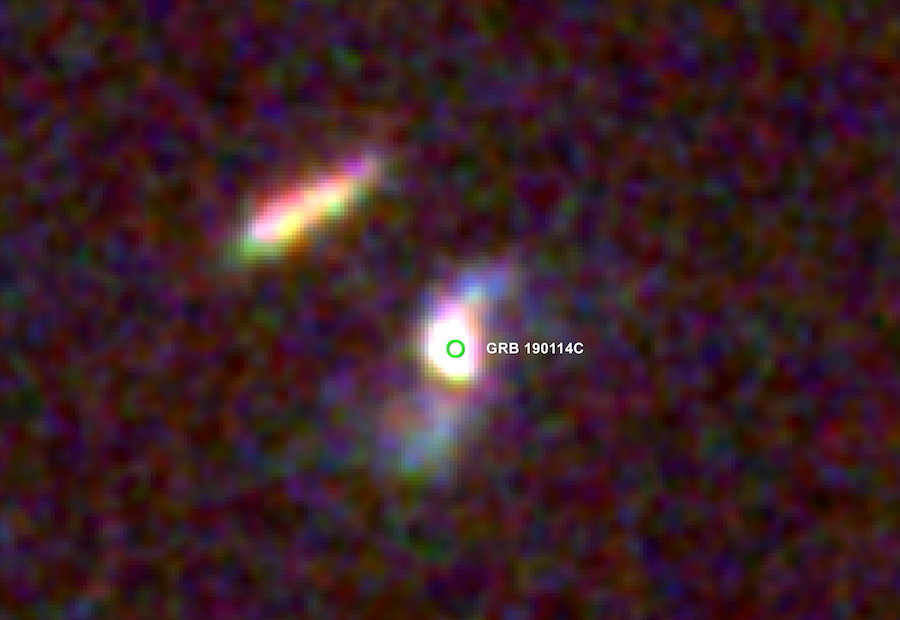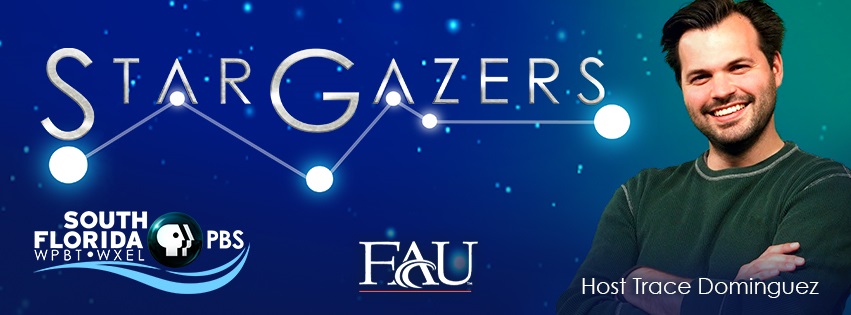Calculations show possibility of bizarre worlds
Tag: Astronomy
New Horizons team, mission principal investigator Stern receive Sir Arthur Clarke Award
Award recognizes international space achievement for New Horizons’ exploration of Pluto and Kuiper Belt object Arrokoth
NASA’s Webb to unveil the secrets of nearby dwarf galaxies
In two separate studies using NASA’s upcoming James Webb Space Telescope, a team of astronomers will observe dwarf galaxy companions to the Milky Way and the nearby Andromeda galaxy. Studying these small companions will help scientists learn about galaxy formation…
New Horizons team, mission principal investigator Stern receive Sir Arthur Clarke Award
Award recognizes international space achievement for New Horizons’ exploration of Pluto and Kuiper Belt object Arrokoth
Caught in afterglow: 1st detection of Inverse Compton emission from dying gamma-ray burst
A dying star emits intense flashes of light called a gamma-ray burst. Most days, the Fermi gamma-ray space telescope detects these flashes. About 20 years ago, scientists predicted that a gargantuan energy level – tera-electron volts – would be detected…
Despite political turmoil, international collaboration continues to flourish
Latest Nature Index supplement shows US-China research collaborations to be stronger than ever, while UK-EU collaborations stall
Extremely energetic particles coupled with the violent death of a star for the first time
Researchers at the Niels Bohr Institute, University of Copenhagen and DTU Space in Lyngby have determined the emission of extremely energetic light particles during the death of a very heavy star for the first time. The discovery was made in…
The simultaneous merging of giant galaxies
Research team discovers three supermassive black holes at the core of one galaxy

Researchers Discover Highest-Energy Light From a Gamma-ray Burst
An international team of researchers, including two astrophysicists from the George Washington University, has observed a gamma-ray burst with an afterglow that featured the highest energy photons—a trillion times more energetic than visible light—ever detected in a burst.
Outback telescope captures Milky Way center, discovers remnants of dead stars
A radio telescope in the Western Australian outback has captured a spectacular new view of the centre of the galaxy in which we live, the Milky Way. The image from the Murchison Widefield Array (MWA) telescope shows what our galaxy…
First detection of gamma-ray burst afterglow in very-high-energy gamma light
After a decade-long search, an international team of researchers including the Kavli Institute for the Physics and Mathematics of the Universe (Kavli IPMU) have for the first time detected a gamma-ray burst in very-high-energy gamma light. This discovery was made…
Hubble studies gamma-ray burst with highest energy ever seen
NASA’s Hubble Space Telescope has given astronomers a peek at the location of the most energetic outburst ever seen in the universe — a blast of gamma-rays a trillion times more powerful than visible light. That’s because in a few…
NASA’s Fermi, swift missions enable a new era in gamma-ray science
A pair of distant explosions discovered by NASA’s Fermi Gamma-ray Space Telescope and Neil Gehrels Swift Observatory have produced the highest-energy light yet seen from these events, called gamma-ray bursts (GRBs). The record-setting detections, made by two different ground-based observatories,…
Caught in the act: MeerKAT telescope spies stellar flare
Scientists using the MeerKAT radio telescope have discovered a unique and previously-unseen flare of radio emission from a binary star in our galaxy
The tera from outer space
Astronomers discover the most energetic gamma-ray burst ever witnessed
Gamma-ray bursts with record energy
First detection of the cosmic monster explosions with ground-based gamma-ray telescopes
Exoplanet axis study boosts hopes of complex life, just not next door
“They’re out there,” goes a saying about extraterrestrials. It would seem more likely to be true in light of a new study on planetary axis tilts. Astrophysicists at the Georgia Institute of Technology modeled a theoretical twin of Earth into…
Scientists find evidence of missing neutron star
Astronomers uncover the relic at the heart of Supernova 1987A that has been hidden for over 30 years
Exoplanet axis study boosts hopes of complex life, just not next door
“They’re out there,” goes a saying about extraterrestrials. It would seem more likely to be true in light of a new study on planetary axis tilts. Astrophysicists at the Georgia Institute of Technology modeled a theoretical twin of Earth into…
Scientists find evidence of missing neutron star
Astronomers uncover the relic at the heart of Supernova 1987A that has been hidden for over 30 years

South Florida PBS and Florida Atlantic University Partner for New Season of Iconic Public Television Series STAR GAZERS
The world’s only weekly television series on naked eye astronomy since 1976, will launch a new season on public television with a new host and university science partner beginning December 1, 2019.
The measurements of the expansion of the universe don’t add up
The mystery of the Hubble constant
How LISA pathfinder detected dozens of ‘comet crumbs’
LISA Pathfinder, a mission led by ESA (the European Space Agency) that included NASA contributions, successfully demonstrated technologies needed to build a future space-based gravitational wave observatory, a tool for detecting ripples in space-time produced by, among other things, merging…
The measurements of the expansion of the universe don’t add up
The mystery of the Hubble constant
How LISA pathfinder detected dozens of ‘comet crumbs’
LISA Pathfinder, a mission led by ESA (the European Space Agency) that included NASA contributions, successfully demonstrated technologies needed to build a future space-based gravitational wave observatory, a tool for detecting ripples in space-time produced by, among other things, merging…
How to observe a ‘black hole symphony’ using gravitational wave astronomy
Shrouded in mystery since their discovery, the phenomenon of black holes continues to be one of the most mind-boggling enigmas in our universe. In recent years, many researchers have made strides in understanding black holes using observational astronomy and an…
Nearly extreme black holes which attempt to regrow hair become bald again
The black holes of Einstein’s theory of relativity can be completely described by just three parameters: their mass, spin angular momentum, and electric charge. Since two black holes that share these parameters cannot be distinguished, regardless of how they were…
Images from NJIT’s big bear solar observatory peel away layers of a stellar mystery
An international team of scientists, including three researchers from New Jersey Institute of Technology (NJIT), has shed new light on one of the central mysteries of solar physics: how energy from the Sun is transferred to the star’s upper atmosphere,…
Two cosmic peacocks show violent history of the magellanic clouds
Two peacock-shaped gaseous clouds were revealed in the Large Magellanic Cloud (LMC) by observations with the Atacama Large Millimeter/submillimeter Array (ALMA). A team of astronomers found several massive baby stars in the complex filamentary clouds, which agrees well with computer…
Spin doctors: Astrophysicists find when galaxies rotate, size matters
Sky survey provides clues to how they change over time
‘Are we alone?’ Study refines which exoplanets are potentially habitable
First study to combine 3D climate modeling with chemistry explores M dwarf planets
Magnetic reconnection on sun’s surface launches solar spicules
New observations of solar spicules, ubiquitous jet-like plasma features that punctuate the Sun’s atmosphere, suggest they are generated by the energy released as the two disparate magnetic fields snap back into alignment near the solar surface. Shortly after, the spicules…
New laser opens up large, underused region of the electromagnetic spectrum
Terahertz frequency laser paves the way for better sensing, imaging and communications
Two cosmic peacocks show violent history of the magellanic clouds
Two peacock-shaped gaseous clouds were revealed in the Large Magellanic Cloud (LMC) by observations with the Atacama Large Millimeter/submillimeter Array (ALMA). A team of astronomers found several massive baby stars in the complex filamentary clouds, which agrees well with computer…
‘Are we alone?’ Study refines which exoplanets are potentially habitable
First study to combine 3D climate modeling with chemistry explores M dwarf planets
Magnetic reconnection on sun’s surface launches solar spicules
New observations of solar spicules, ubiquitous jet-like plasma features that punctuate the Sun’s atmosphere, suggest they are generated by the energy released as the two disparate magnetic fields snap back into alignment near the solar surface. Shortly after, the spicules…
New laser opens up large, underused region of the electromagnetic spectrum
Terahertz frequency laser paves the way for better sensing, imaging and communications
Mysteries behind interstellar buckyballs finally answered
Researchers discovered a mechanism creating complex carbon molecules in a simulated planetary nebula environment
Mysteries behind interstellar buckyballs finally answered
Researchers discovered a mechanism creating complex carbon molecules in a simulated planetary nebula environment
A runaway star ejected from the galactic heart of darkness
Astronomers have spotted an ultrafast star, traveling at a blistering 6 million km/h, that was ejected by the supermassive black hole at the heart at the Milky Way five million years ago. The discovery of the star, known as S5-HVS1,…
A runaway star ejected from the galactic heart of darkness
Astronomers have spotted an ultrafast star, traveling at a blistering 6 million km/h, that was ejected by the supermassive black hole at the heart at the Milky Way five million years ago. The discovery of the star, known as S5-HVS1,…
Warning system for aviation exposure to solar energetic particles (WASAVIES)
Provide ICAO a mandatory information for cosmic ray radiation protection management of aircrews
Ancient gas cloud reveals universe’s first stars formed quickly
Washington, DC– The discovery of a 13 billion-year-old cosmic cloud of gas enabled a team of Carnegie astronomers to perform the earliest-ever measurement of how the universe was enriched with a diversity of chemical elements. Their findings reveal that the…
Clemson scientists further refine how quickly the universe is expanding
Clemson team collaborates to quantify one of the most fundamental laws of the cosmos
New study suggests ‘Pac-Man-like’ mergers could explain massive, spinning black holes
RIT Associate Professor Richard O’Shaughnessy contributes to study in Physical Review Letters
SwRI demonstrates balloon-based solar observatory
Low-cost option breaks down barriers to solar research
NASA’s NICER catches record-setting X-ray burst
NASA’s Neutron star Interior Composition Explorer (NICER) telescope on the International Space Station detected a sudden spike of X-rays at about 10:04 p.m. EDT on Aug. 20. The burst was caused by a massive thermonuclear flash on the surface of…
UCLouvain researcher makes the heart of Mars speak
For 20 years, Véronique Dehant, a space scientist at University of Louvain (UCLouvain) and the Royal Observatory of Belgium, has been working on understanding the Earth’s core. In a few months, she will be able to complete her research by…
UCLouvain researcher makes the heart of Mars speak
For 20 years, Véronique Dehant, a space scientist at University of Louvain (UCLouvain) and the Royal Observatory of Belgium, has been working on understanding the Earth’s core. In a few months, she will be able to complete her research by…
NASA’s TESS presents panorama of southern sky
The glow of the Milky Way — our galaxy seen edgewise — arcs across a sea of stars in a new mosaic of the southern sky produced from a year of observations by NASA’s Transiting Exoplanet Survey Satellite (TESS). Constructed…